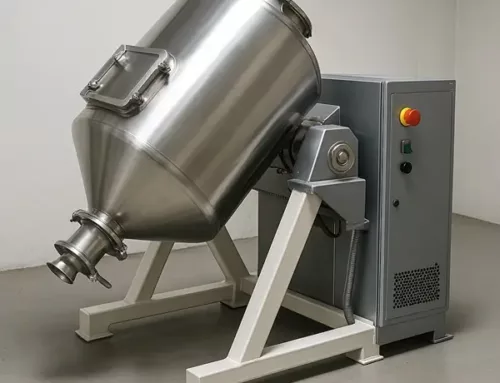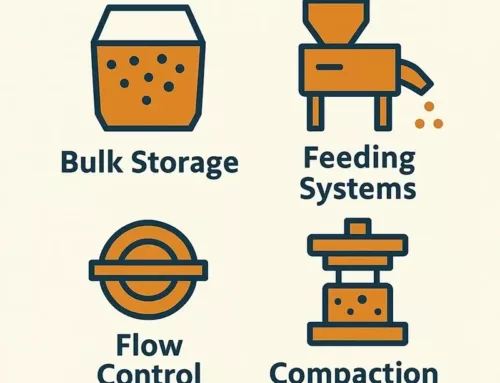Table of Contents

Mixing powders is an art form. Unlike liquids, powders do not behave as a continuum. They can be free-flowing or cohesive, requiring different amounts of energy to facilitate movement. Additionally, variations in particle size, density, and shape among the components further complicate the mixing process. As a result, mixing solid materials demands a deeper understanding of the materials and their properties, as well as the working principles of the mixing equipment.
Powder mixing is typically not spontaneous. In contrast to fluid mixing, particulate systems require mechanical methods to achieve mixing. This process involves shaking, tumbling, vibration, or other mechanical techniques to ensure effective blending.
Powder Mixing Equipment and Processing – Three Mechanisms
Three mechanisms facilitate solids mixing: convection, diffusion, and shear. In convection mixing, groups of particles transfer from one location to another. Diffusion mixing occurs when individual particles distribute across a surface within the mixture. In shear mixing, groups of particles blend through slipping planes that form within the mass of the mixture.
During mixing operations, particle movement can lead to segregation, which reverses the mixing process. Segregation occurs when particles with significantly different densities are mixed. In such cases, denser particles tend to settle at the bottom of the mixture. Similarly, when coarse and fine particles are set in motion, the fines tend to segregate from the larger particles.
Therefore, quality control is crucial in the mixing process. Monitoring ensures that any undesired segregation is detected and addressed promptly.
Challenges in Achieving Homogeneity in Solids Mixing
A typical solids mixing process resembles a chemical reaction aiming for an equilibrium state. Once the mixing and de-mixing mechanisms reach equilibrium, the final product is considered a homogeneous mixture. To measure the degree of homogeneity, it is crucial to sample representative sub-lots of the mixture.
The accuracy of the mixture analysis is significantly influenced by several factors. These include the sampling method, the number of samples taken, the sample size, and the location of each sample within the bulk material. Therefore, it is clear that mixing is not an easy process in the powder and solid domain.
Versatile Mixing Equipment for Powder Processing
In our field testing area, we utilize various types of mixing equipment for powder blending. We have diffusion mixers, such as cube mixers, with mixing volumes ranging from 2 to 12 liters. Additionally, we use convective mixers with volumes from 5 to 20 liters, as well as high shear mixers with capacities between 1 and 6 liters.
This variety of mixing equipment allows us to effectively blend free-flowing powdered materials and very cohesive substances across a wide range of volumes. By incorporating a high shear mixer, we can apply high energy to each batch, resulting in very short mixing times and enhanced process flexibility.
High shear mixing is suitable for many industries, including food, beverage, dairy, personal care, biotechnology, and pharmaceuticals. This method can achieve a homogeneous mixture, especially for lumpy and agglomerated materials that may not mix effectively in diffusion-based cube mixers.
Cube Mixers for Enhanced Process Visibility
We use cube mixers made of stainless steel and also offer a transparent version. The transparent mixers provide a visual perspective of the mixing process and can indicate potential segregation of the powdered product. This segregation can negatively impact mixing quality.
Coupled with our product characterization capabilities, such as particle size analysis and segregation analysis, we provide a comprehensive evaluation of your mixing process.




